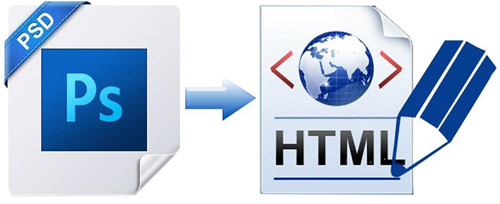Why PSD to HTML Conversion Won't Die Any Time Soon

WordPress took the world by storm the moment it was launched. It had the tools that Web designers were looking for to make their work easier. That is the thing about Internet technology, it was meant to make the lives of its users so much easier. Therefore, the question that many developers will ask you today is why one would be bothering to learn about PSD to HTML conversions in this day and era.
You can get a free WordPress theme and have your website launched within a few minutes. It really does not make sense why one would want to crack their head trying to understand some complex codes.
Well, it would make a lot of sense if that code that is being learnt is the one which has a billion benefits. There are some things that are difficult, but they have their own merits. Everything has its flaws and some you will learn to live with, but others just go out of date because of their disadvantages. Take for instance something like Windows Explorer. It is horribly slow but people still use it because of its user-friendliness.
Story of PSD to HTML

The same is the case with PSD to HTML conversion. There might be tools that are simpler to use to achieve the same results but then it has some amazing benefits that it offers. Everyone seems to have their own definition of PSD to HTML conversion based on what it does for them. There are some front-end developers who see it as 'slicing' while others especially those in Web design view it as natural workflow. For the business owners it really does not matter what it is, as long as they get the results that they are looking for.
At the most basic level PSD to HTML is the process through which the front-end developers convert a Web page design file into a fully functional HTML Web page. The thing about this process is that it results in responsive, attractive and interactive pages. This is of course only when the page is done correctly.
There have been predictions that PSD to HTML will die out every single year that has passed. With every New Year, "this is the year PSD to HTML died." It is still alive and kicking. This however sounds strange to a lot of people considering the availability of starter themes, tools and frameworks for platforms such as WordPress and Drupal. It cannot be truer though- PSD to HTML is very much alive and well. It is used by designers all over the world on a daily basis.
Still going strong
Here is the thing about this process; it is part of the natural process that is observed when building a website. Therefore, it is not about to die out any time soon. You can skimp out on this process thanks to the tools and frameworks that have come with technology. This is probably because someone else has already done it for you. The scope of its popularity has diminished over the years as a result of this. Nonetheless it continues to be a major part of life.
Thanks to the tools that are available today, you can practically drag and drop items onto a canvas. Rearranging them will only take a few moments and just like that you will have the final site up and ready with such effortlessness. As a matter of fact you will not have to leave your Web browser but you will still need a specific set of skills to go with.
Creativity is an important aspect of Web development. You will not get away with knowing the tech side of your web development job. A good understanding of the technical aspects of development and memorizing CSS and HTML is great. However you will still need to be in touch with the creative side of yourself. This is where the attractive and interactive sites come in. The colors and color schemes, usability and typography are an integral part of work when designing a website in the browser.
This will work 100 percent of the time in theory but in a real-life situation it does not. Most developers will get better results if they consult with a designer who provides them with a PSD. It is so much better than building everything in the browser from the bottom up.
Why is PSD to HTML still effective?
PSD to HTML conversions are very effective at a number of things. If you have gotten rid of it from your workflow then it is probably a good time to throw it back into the equation. Here are some reasons why you might want to do so:
1. Unique designs
One of the main problems that people have with modern frameworks and popular themes for WordPress is that the end results always look alike. Building a site that stands out is practically impossible with these tools. However, with the various forms of PSD to HTML you are going to be able to introduce elements that are totally unique designs.
2. Small scale design is quicker
PSD to HTML does not have to be some huge and complicated process where an army of developers are working on one site. You can work on it small scale and it will be even quicker. Have a number of site elements prepared and then include them in your HTML structure.
3. Simple swapping of default framework elements
If you using a framework like Bootstrap then swapping default graphic elements will be so easy. This swapping makes creation of custom items such a walk in the park. Simply have the PSD file sliced and then add specific graphic files in all the correct places such that the framework makes use of the graphics instead of the default elements.
Bottom line
PSD to HTML conversion is not going anywhere. It might be easy to create a site using the tools and themes that are available nowadays. However, not a single process creates such amazing customized websites as this process.
Author Bio - Sourabh Sharma is a Web consultant who is associated with psdconversion.net, a sister company of Ethane Web Technologies. He loves sharing his experience about Web design and development through blogging. You can also find him on Twitter @SourabhSharmaji.







